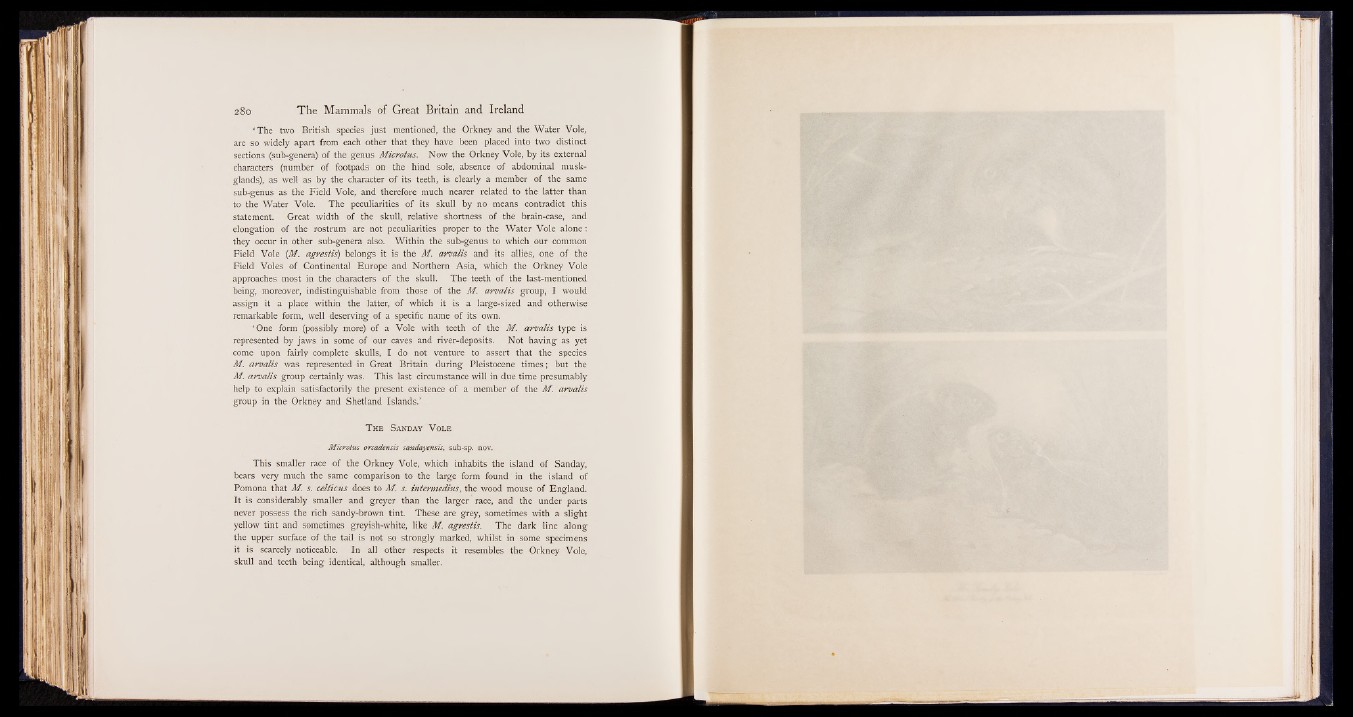
‘ The two British species just mentioned, the Orkney and the Water Vole,
are so widely apart from each other that they have been placed into two distinct
sections (sub-genera) of the genus Microtus. Now the Orkney Vole, by its external
characters (number of footpads on the hind sole, absence of abdominal musk-
glands), as well as by the character of its teeth, is clearly a member of the same
sub-genus as the Field Vole, and therefore much nearer related to the latter than
to the Water Vole. The peculiarities of its skull by no means contradict this
statement. Great width of the skull, relative shortness of the brain-case, and
elongation of the rostrum are not peculiarities proper to the Water Vole alone:
they occur in other sub-genera also. Within the sub-genus to which our common
Field Vole (M. agrestis) belongs it is the M. a rva lis and its allies, one of the
Field Voles of Continental Europe and Northern Asia, which the Orkney Vole
approaches most in the characters of the skull. The teeth of the last-mentioned
being, moreover, indistinguishable from those of the M. a rv a lis group, I would
assign it a place within the latter, of which it is a large-sized and otherwise
remarkable form, well deserving of a specific name of its own.
‘ One form (possibly more) of a Vole with teeth of the M. a rva lis type is
represented by jaws in some of our caves and river-deposits. Not having as yet
come upon fairly complete skulls, I do not venture to assert that the species
M. a rva lis was represented in Great Britain during Pleistocene times; but the
M. a rva lis group certainly was. This last circumstance will in due time presumably
help to explain satisfactorily the present existence of a member of the M. a rva lis
group in the Orkney and Shetland Islands.’
T h e S a n d a y V o l e
Microtus orcadensis sandayensis, su b-sp. nov.
This smaller race of the Orkney Vole, which inhabits the island of Sanday,
bears very much the same comparison to the large form found in the island of
Pomona that M. s. celticus does to M. s. intermedins, the wood mouse of England.
It is considerably smaller and greyer than the larger race, and the under parts
never possess the rich sandy-brown tint. These are grey, sometimes with a slight
yellow tint and sometimes greyish-white, like M. agrestis. The dark line along
the upper surface of the tail is not so strongly marked, whilst in some specimens
it is scarcely noticeable. In all other respects it resembles the Orkney Vole,
skull and teeth being identical, although smaller.